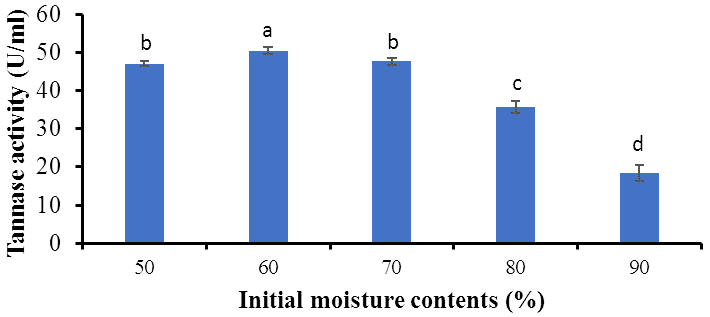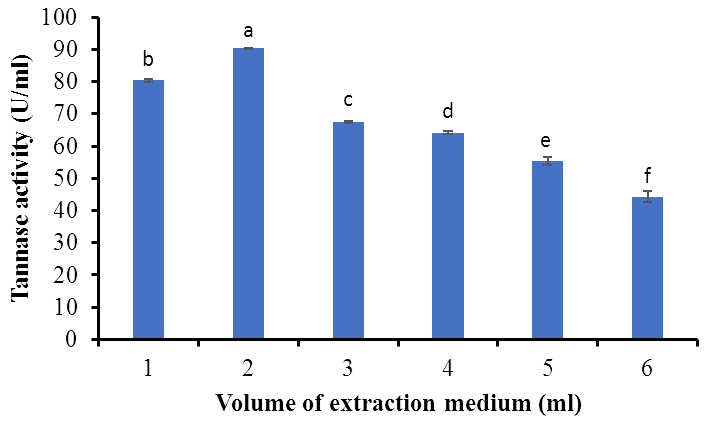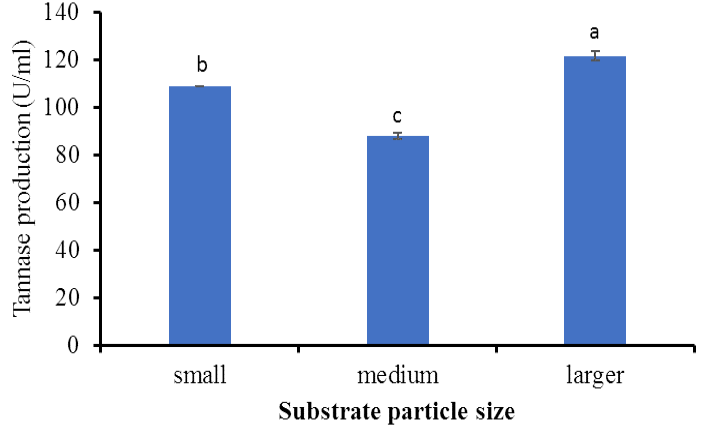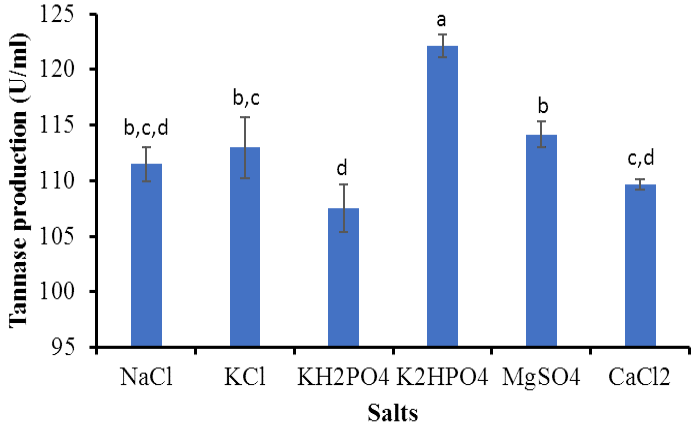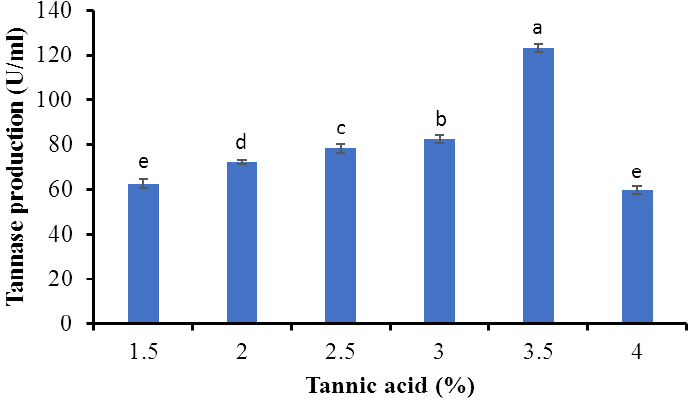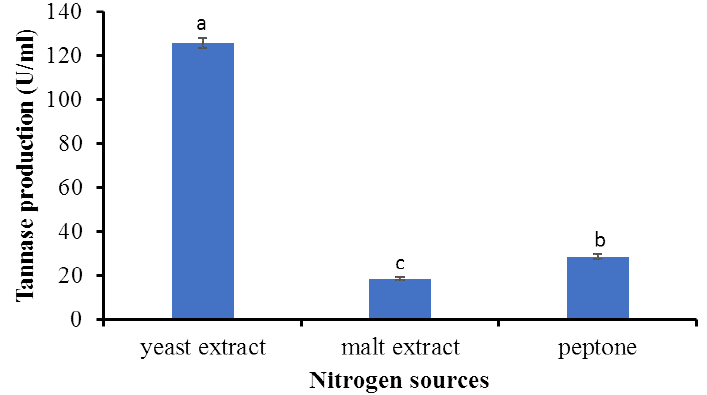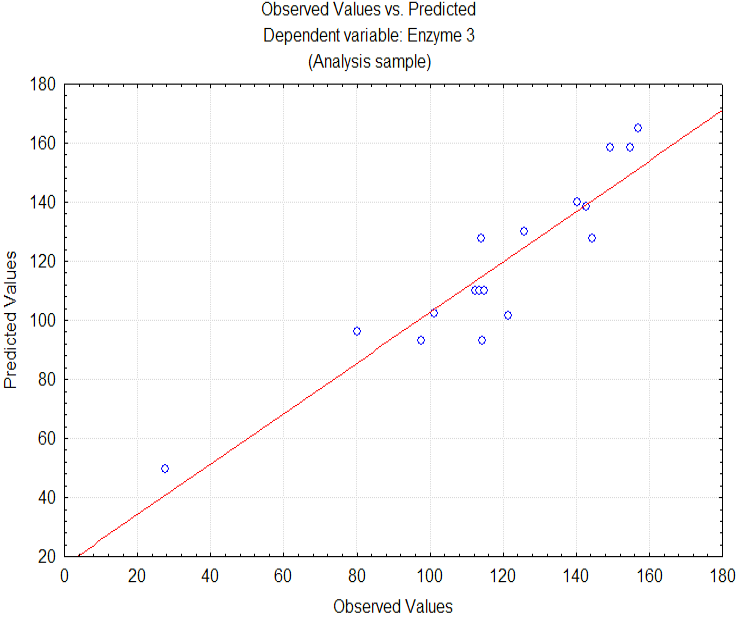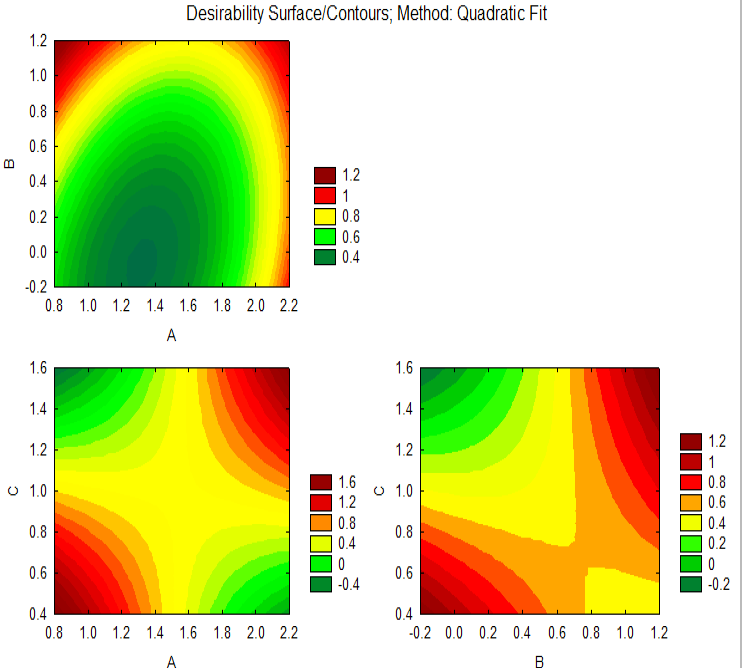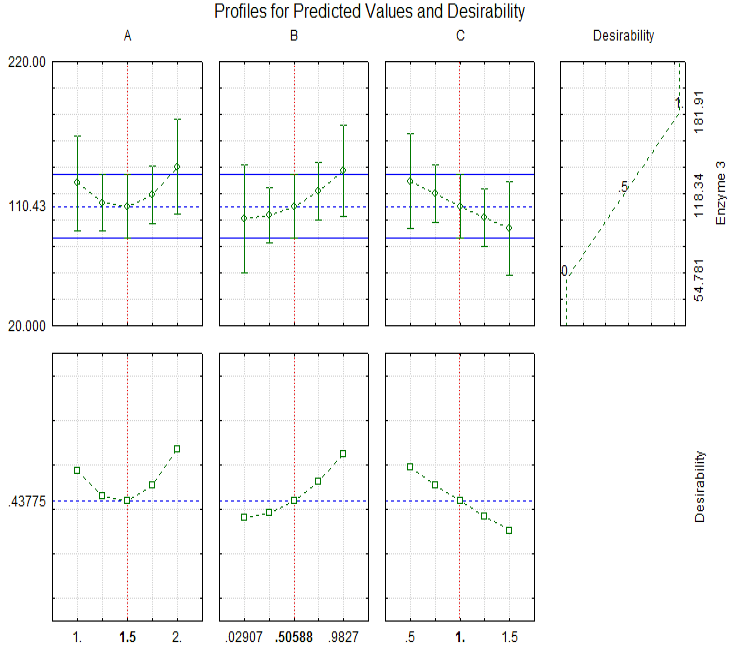Optimization of Tannase Production from Raoultella ornithinolytica using Corn (Zea mays) Leaves in Solid State Fermentation
Optimization of Tannase Production from Raoultella ornithinolytica using Corn (Zea mays) Leaves in Solid State Fermentation
Hafiz Abdullah Shakir1*, Iqra Javed1, Muhammad Irfan2*, Shaukat Ali3, Muhammad Khan1, Farah Rauf Shakoori1, Javed Iqbal Qazi1 and Muhammad Abrar Yousaf1
Tannase production from R. ornithinolytica in SSF using different initial moisture contents of substrate. Different alphabet on Means±SD (bars) showed significant difference (Tukey’s test, P<0.001).
The residual plot of experimental and predicted response for tannase production.
Contour plots of tannase production from R. ornithinolytica showing the interaction of tannic acid (A), K2HPO4 (B) and yeast extract (C) concentrations.
Desirability chart for tannase production by R. ornithinolytica in SSF using RSM.







